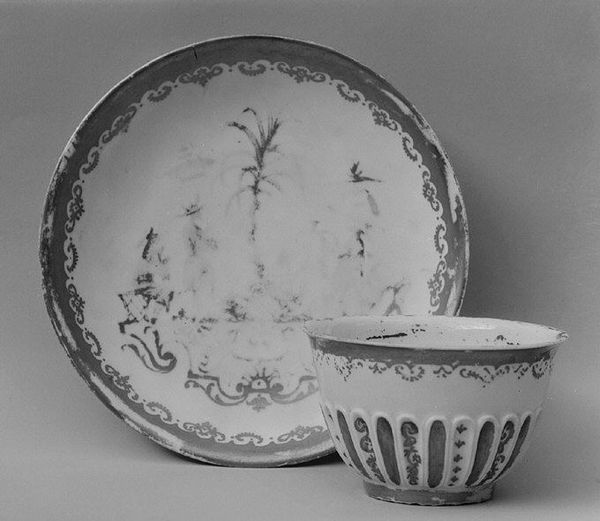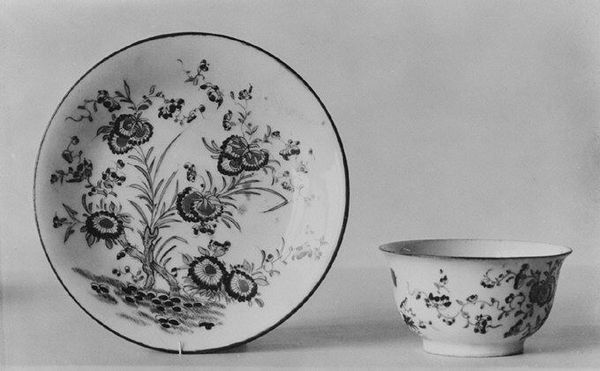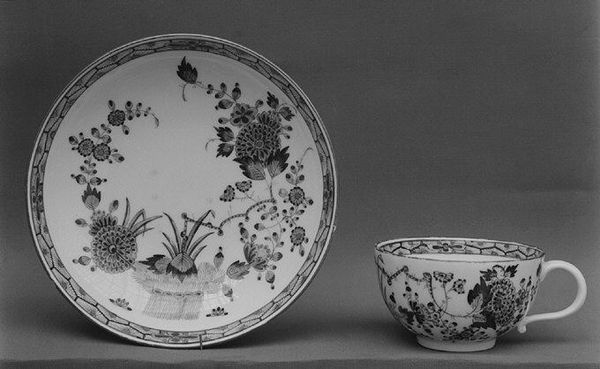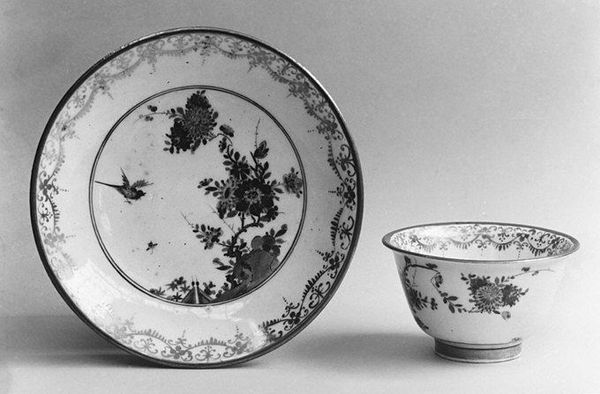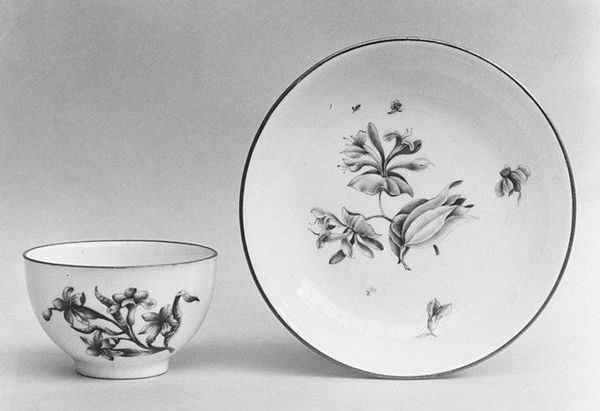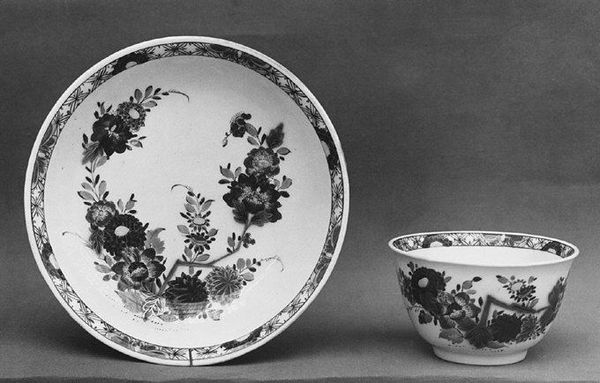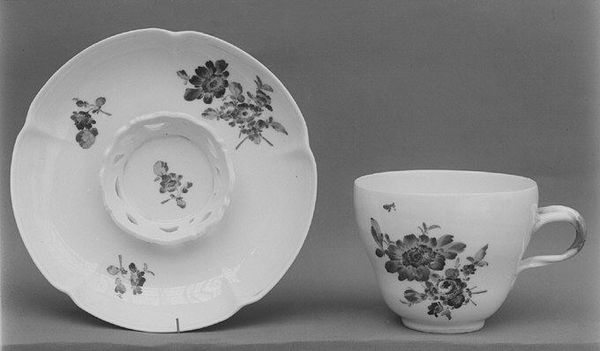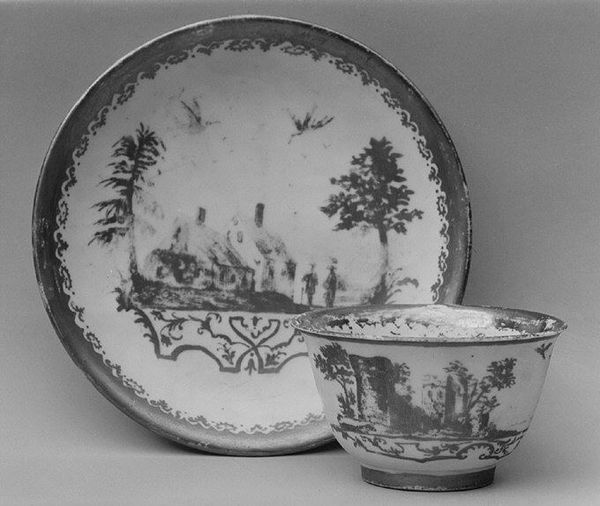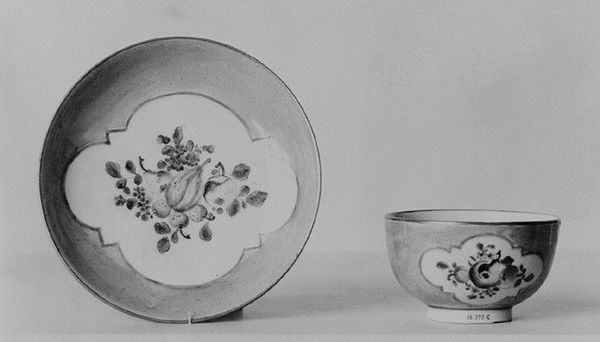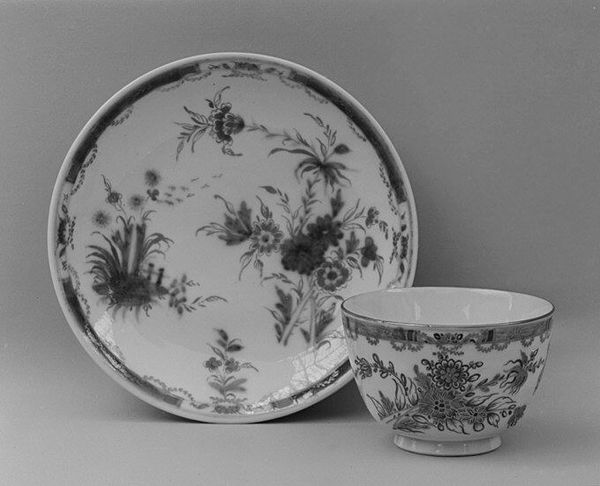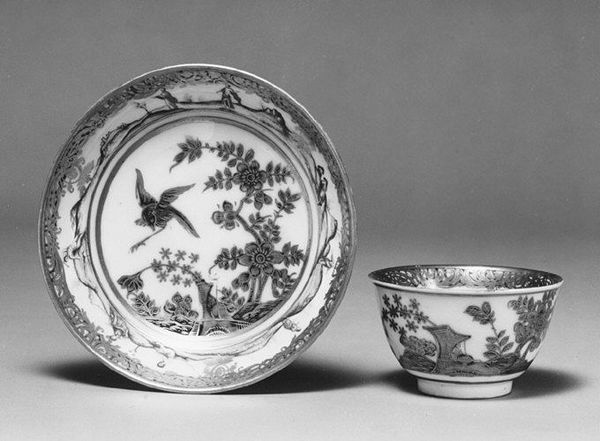
ceramic, porcelain, sculpture
#
asian-art
#
ceramic
#
porcelain
#
sculpture
#
rococo
Dimensions: Overall (Cup (.387)): 1 1/2 × 3 1/16 in. (3.8 × 7.8 cm) Diameter (Saucer (.388)): 4 5/8 in. (11.7 cm)
Copyright: Public Domain
Editor: So, this is a cup and saucer made around 1725-1735 by the Meissen Manufactory. They're porcelain, and are currently held at the Metropolitan Museum of Art. I'm really drawn to the detail in the floral design. What do you make of the object itself, beyond just the image it presents? Curator: Well, immediately, I’m thinking about the labour. Consider the materials – porcelain. Where did the kaolin come from? The specific painting details also speaks to its construction, and its connection to cobalt. The mining, trade routes, and skill involved in producing something like this – how does the exotic other influence design choices? Editor: That's a point – the "exotic other"! The style is listed as Rococo, which I know was popular then, but with what looks like clear Asian influences in the floral patterns. Is this simply luxury imitating imported Asian artworks? Curator: Exactly. The social status associated with owning porcelain is crucial. These objects are not just about aesthetics but about displaying wealth and participating in global trade networks, including the imitation of Asian artwork. The cup and saucer themselves become signifiers. How were these objects marketed and consumed, and who had access to them? Editor: So, beyond its surface beauty, the piece speaks to a history of global exchange, material access, and perhaps, the birth of luxury branding? Curator: Precisely. Seeing art through the lens of its materials and means of production provides insight into broader societal structures and values. Editor: I never would have thought about porcelain in that way before. I see this simple luxury object in an entirely new, much more intricate, light!
Comments
No comments
Be the first to comment and join the conversation on the ultimate creative platform.

